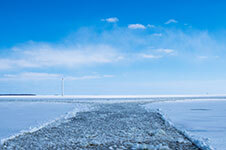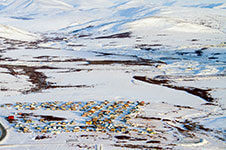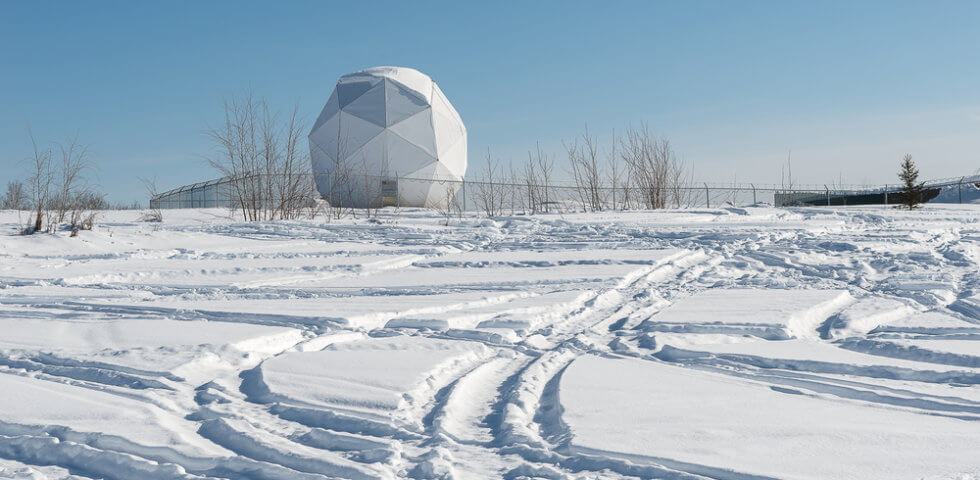The North American Arctic is at the forefront of American national security. The thawing of Arctic ice has drastically changed the landscape of the region and unveiled several advantages for countries in strategic defense postures, natural resources, and commercial shipping routes. With this transformation, the United States and its allies are in the midst of a significant geopolitical battle with Russia and China. In order to gain a competitive edge and increase national security by closing critical gaps in the Arctic, the US relies on dependable, fast broadband connection.
The Quintillion Network plays an essential role in this movement. It is the first and only subsea fiber optic cable network in the US Arctic and transports more than 60 TB of data daily. This system brings faster, more reliable broadband to this area. As a result, it supports national security measures in the US Arctic and helps advance the surrounding rural Alaska communities.
The US has shown a vested interest in the Arctic by increasing its military presence and capitalizing on economic opportunities in the region. Looking at the globe from above, it’s easy to see why the Arctic is such an advantageous area, as it shares its border with several world superpowers. Outlined below is how reliable broadband services support national security in this tense geopolitical atmosphere.
Filling Military Communication Gaps: Arctic Security Solutions for Reliable Broadband
As a region characterized by frigid climates, rugged terrains, and off-the-grid locations, the North American Arctic has always struggled with finding sustainable solutions for high-speed internet. As the US is increasing its military presence in the Arctic, communication has been a major concern, including issues such as:
- Problems with high-frequency radio signals affecting radar sensors
- Poor connectivity and satellite links in high-North locations
- The need for a modernized North Warning System
- Difficulties using network-connected weapons systems
- A lack of broadband capacity on operating sea ships
Without the right infrastructure in place, the US DoD is ill-equipped to compete in the North American Arctic and defend the homeland. This is where Quintillion comes in.
The Quintillion Fiber Optic Cable System
Quintillion’s fiber optic network has helped in this arena by providing the fastest, most reliable internet connection in the Arctic possible. Our system has been designated critical infrastructure by Team Telecom, the working group of representatives from the Federal Governmental Authorities charged with ensuring national security. This group consists of the Departments of Homeland Security, Defense, Justice, State, Treasury, and Commerce, as well as United States Trade Representative, the Federal Bureau of Investigation, Department of Homeland Security, and Department of Defense.
The first phase of this system starts in Alaska and brings reliable, secure, and fast broadband to the Northwest Arctic and North Slope regions of the state. The current network spans a total of 1700 miles, including 500 miles of terrestrial cables and 1200 miles of subsea cables. It is a three-pair system with a 30-Tbps capacity that is scalable up to 90 Tbps. Thousands of Alaskans have already connected to this system, including residents in remote locations.
In future phases, the system will expand to other parts of the world, further supporting national security measures in the Arctic and internationally. The proposed system will stretch from existing fiber in the North American Arctic to Tuktoyaktuk, Canada, and Inuvik. From here, the system will connect to major telecommunication gateways in the US, including Seattle, Denver, Chicago, New York, and Ashburn.
We also plan to extend the system from Northern Canada through the Northern Passage to potential landings in the Canadian Arctic, Greenland, and Iceland. Finally, the system will cross oceans to reach landings in Europe and Japan (through the planned Japan-Washington State Trans-Pacific Cable System).
The Quintillion HiLDA Ground Station
Satellite communication plays a fundamental role in Arctic security and national defense. Low-orbiting satellites are much closer to ground stations on Earth, therefore reducing latency. Additionally, satellite technology can more easily reach remote areas, and in turn, cast a wide net of coverage area. The US Air Force has already invested significant resources in satellite technology with its new Space Development Agency and the US Air Force Space Fence radar.
To aid in this expansion up toward space, Quintillion partnered with ATLAS Space Operations to build the Quintillion HiLDA ground station. This ground station was built in Utqiaġvik, Alaska, making it the highest latitude ground station on US soil. This provides a secure place for satellite organizations and companies in the US to process classified data without having to compromise speed.
The HiLDA ground station represents a crucial crossroad between space and terrestrial communications. To increase security and speed, it connects to major internet exchanges in the lower 48 via fiber and operates on S and X bands (with K band in planning).
Russia and China’s Involvement in the Arctic
In 2003, Russia placed a Russian flag near the North Pole. Since this symbolic mark of ownership, Russia has continued to try and gain control of the Arctic. This doesn’t come as a big surprise, as Russia’s territory contains the largest Arctic coastline and a large region of Arctic land, which is highly populated and industrialized.
Like the United States, Russia has increased its military presence in the Arctic. Maxar released satellite images in the spring of 2021 that revealed an extensive build-up of Russian military bases, including icebreakers, bombers, MiG31BM jets, submarines, and radar systems. These images also revealed advanced, nuclear-powered missile weapons, including the Poseidon 2M39 missile.
Additionally, Russia has plans to continue developing the Northern Sea Route, which is a commercial shipping route running along the Russian Arctic coast. This would allow Russia the ability to export items more quickly, as well as cut travel time to Europe and Asia by 40%.
In 2020, the Christophe de Margerie was the first large-capacity cargo vessel to travel this route eastward without support from icebreakers, completing the journey in under eight days. While heavy ice made it impossible to use this route in the past, reports from Russia state they will be able to use this route year-round by 2022 or 2023.
China’s involvement in the Arctic was more delayed and less expected as the shortest distance between China and the Arctic is 900 miles. However, Beijing has deemed itself a “near-arctic state” and released a white paper in 2013 called “China’s Arctic Policy.” And in 2017, China proposed “The Polar Silk Road,” which, like the Northern Sea Route, would open up new global trade and shipping routes through the Arctic. China has also established itself as a major player in the Arctic by funding research expeditions, releasing the first Xuelong 2 icebreaker, and participating in the Arctic Council.
Russia was originally suspicious of Chinese involvement in the Arctic and had gone as far as blocking Chinese vessels from operating in the NSR in 2012. However, both nations are now cooperative in their attempts to monopolize the Arctic.
The US Arctic Security Strategy
To compete with Russian and Chinese involvement in the Arctic, the United States may soon revisit its National Defense Strategy. Major parts of this strategy will likely include strengthening ally partnerships, preventing military attacks, and maintaining sovereignty in the Arctic.
Developing infrastructure and expanding technology are a necessary part of this strategy. By partnering with the private sector, satellite and fiber optic infrastructure can help develop military capabilities in the Arctic, while also better serving and advancing the communities that reside in this region.
Quintillion is proud to support US national security measures. Contact us to learn more about our system.















